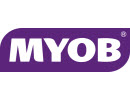Division 293 tax reduces the tax concession on super contributions for individuals with income greater than the Division 293 threshold.
Individuals earning over the threshold and making concessional contributions to superannuation, will be liable for Division 293 tax.
The rate of Division 293 tax is 15%.
Division 293 threshold
The threshold is $250,000 – see below how this amount is calculated.
An individual’s income is added to certain super contributions and compared to the Division 293 threshold.
Division 293 tax is payable on the excess over the threshold, or on the super contributions, whichever is less.
Overview
Super contributions made before tax (ie concessional contributions) are taxed within your super fund at a concessional rate of 15% (up to the concessional contribution limit which currently stands at $25,000pa).
From 1 July 2012, an additional 15% tax (known as Division 293 tax) was introduced. It reduces the tax concessions on superannuation contributions for individuals with income greater than $250,000 per annum.
The Division 293 tax is payable in addition to the standard 15% contributions tax.
This means, if you’re a high income earner with an income of more than the threshold, the total tax on your before-tax contributions below the concessional contribution limit is 30%.
If your income is less than the $250000 threshold, but by including your before tax contributions (that are below the concessional contribution limit) the total is more than the $250,000 threshold, the 30% tax rate will apply to the part of your before-tax contributions that are over $250,000 (but below your concessional contribution limit).
For example, if your income is $230,000 and your before-tax contributions are $25,000, you only pay the 30% tax rate on $5,000.
Div 293 tax is not included in your tax assessment notice. Once your tax return is lodged, The ATO will compute the figure and issue a separate Division 293 notice of assessment.
Income for Division 293 purposes
The ‘income’ that is used to calculate the Division 293 tax is similar to the income used for determining whether you are liable to pay the Medicare levy surcharge.
It excludes reportable superannuation contributions (that are instead included in the low tax contributions).
This income includes the following amounts, if applicable:
- taxable income (assessable income less deductions)
- reportable fringe benefits
- net financial investment loss
- net rental property loss
- the net amount on which family trust distribution tax has been paid.
It excludes:
- the taxed element of a superannuation lump sum benefit (other than a Death benefit) up to the low rate cap amount (relevant only to those aged between 55 and 59).
- Low tax contributions If you are an accumulation member.
Low tax contributions
If you are an accumulation member, low tax contributions are generally the concessional contributions made in a financial year, excluding any excess concessional contributions. For most individuals, this will be employer contributions, salary sacrifice contributions and any deductible personal contributions. However, it may include additional amounts, for example, if your employer pays superannuation insurance premiums or expenses on your behalf.
Does Division 293 tax apply to me?
If the total of your income for surcharge purposes and low tax contributions is above $250,000, the Division 293 tax will apply to the lesser of the following two amounts: (i) the amount by which your total income for surcharge purposes and low tax contributions exceeds $250,000; or (ii) the total of your low tax contributions. The additional 15% tax is applied to the lesser of these two amounts.
Excess Concessional Contributions Tax
If you exceed the $25,000 concessional cap, excess concessional contribution tax will apply. Division 293 tax does not apply to the excess. The excess will be included by the ATO in your income tax assessment notice.









